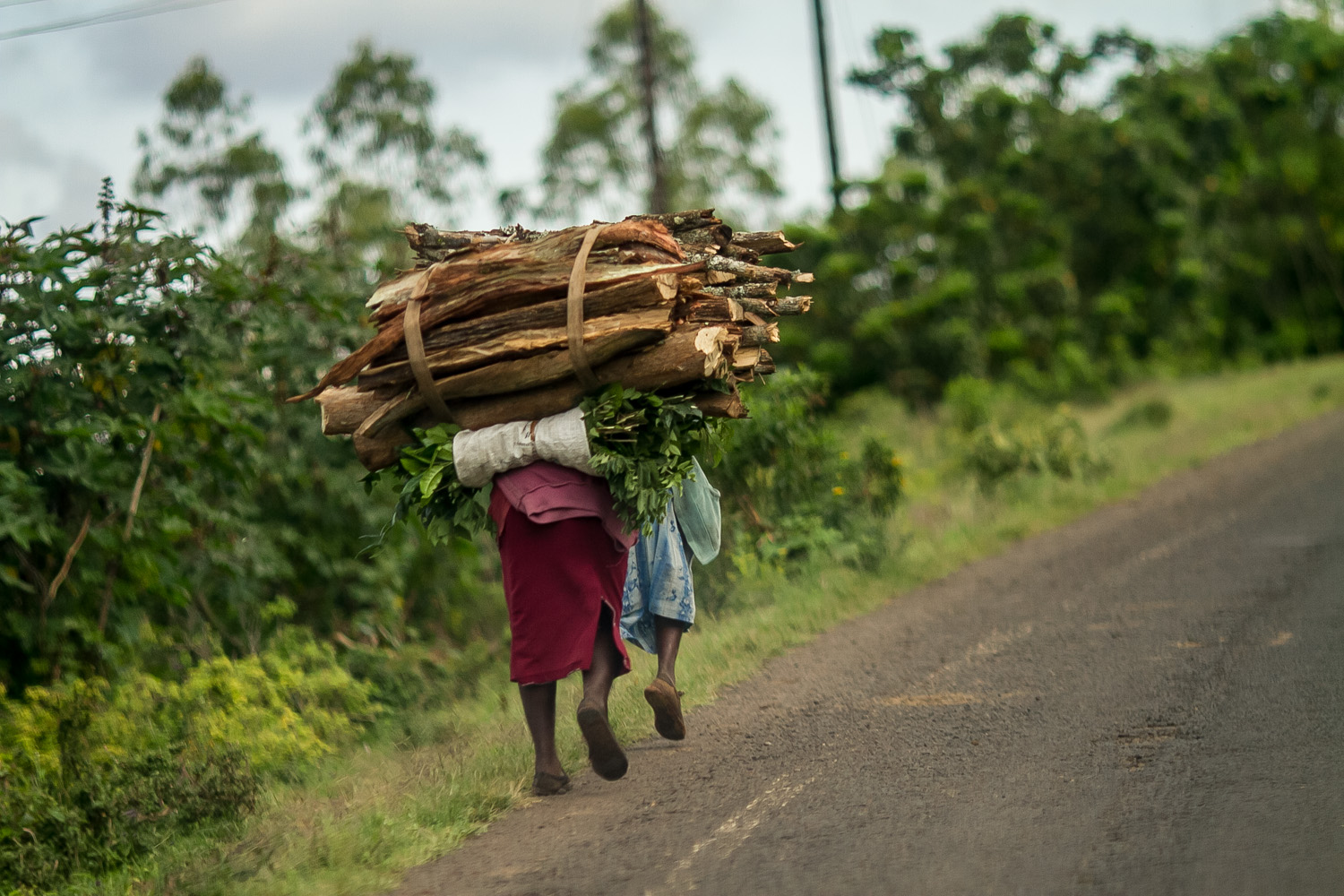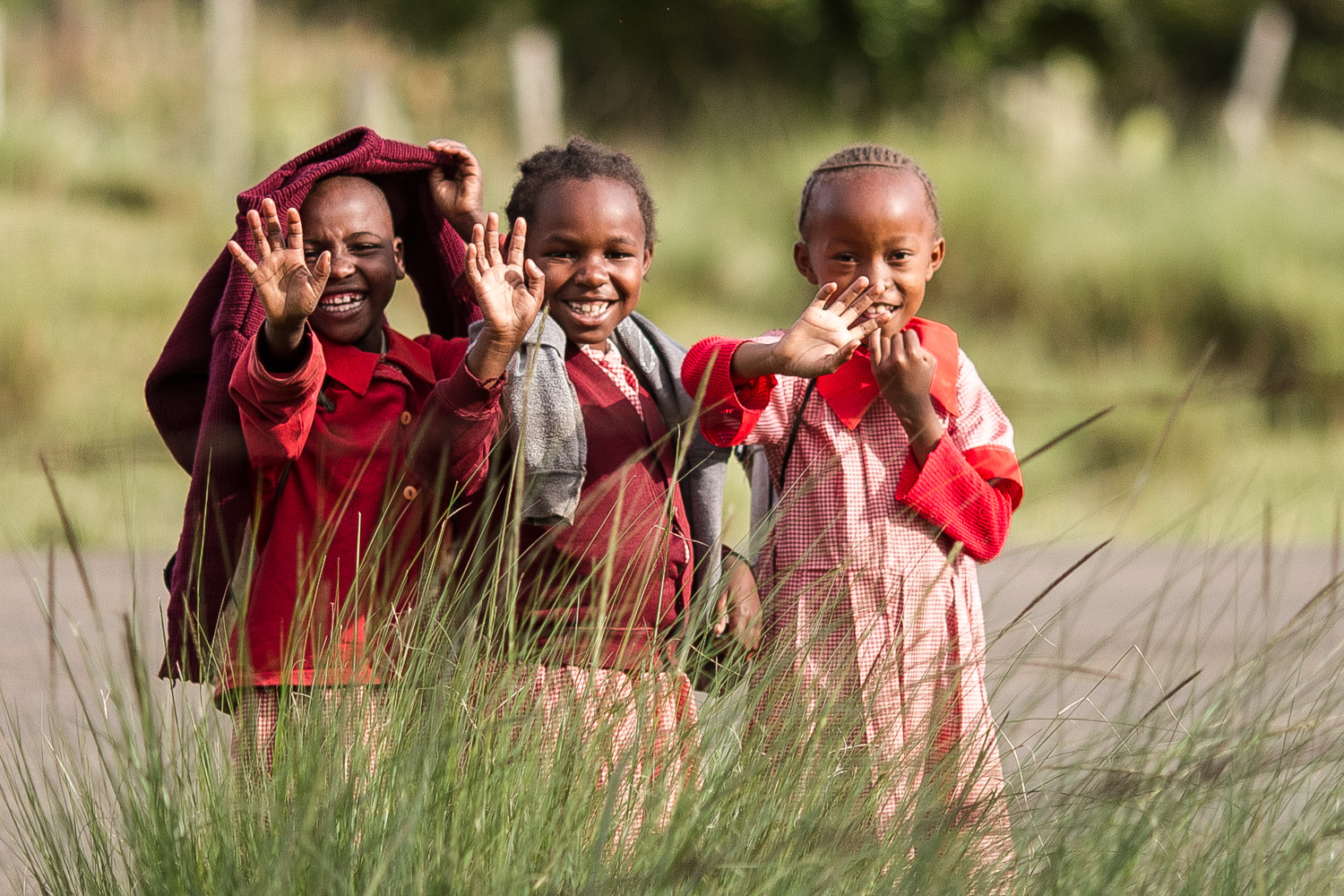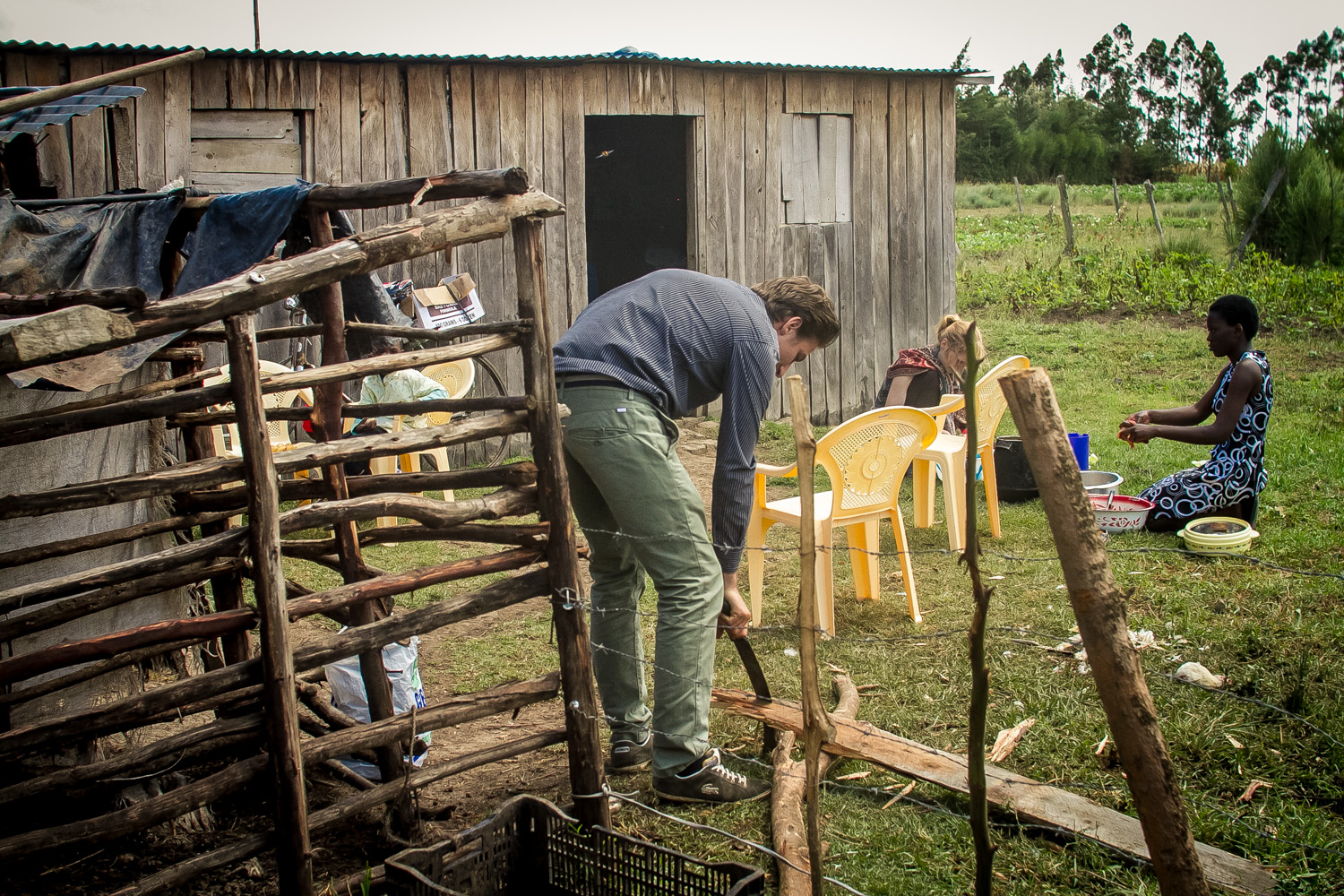For the purpose of my thesis project, I travelled to rural Kenya for a month, in May 2014. I had very little knowledge of the country (and the whole of East Africa) before that, and I suspect most you reading this are in the same situation.
This is a small photoblog of my journey there.
 Amsterdam-Nairobi long courier night flight.
Amsterdam-Nairobi long courier night flight.
My first moments in Nairobi were spent … looking for the driver that was supposed to pick me up from the airport to my hotel. He never showed up. I had to get a cab (and pay the quite high “white-clueless-tourist” fee, although I avoided paying far more, and got thr price down by half).
Once at the hotel, the first clues about the loss of comfort I would have to adapt myself to already started to show : there is no hot or drinking water in the rooms (although they had an electric shower that warmed the water… a bit), and even in Nairobi, the internet connexion was at best, intermittent. But the hotel was nice enough, and the staff very friendly, they even went grocery shopping for me after dark (Nairobi isn’t a very safe city for a white person to wander alone after dark).
 View on the Business District of Nairobi, from the hotel rooftop.
View on the Business District of Nairobi, from the hotel rooftop.
While in Nairobi it is easy to get a (more or less) reliable internet connection, it is very different in the rural areas of Kenya, such as the Naro Moru area where I was. I could only get enough bandwith to check my emails (and even for that, I had to go out of my room, sometimes go up on the roof if I wanted enough stability to download an attached file).
So… I learned to live without internet. Which was not an easy thing for me, being kind of a tech addict.
The major tourist attraction in Nairobi is the National Park, where you can go on a safari less than 20 minutes from the city center. It has been remarkably well conserved given its proximity to the city.
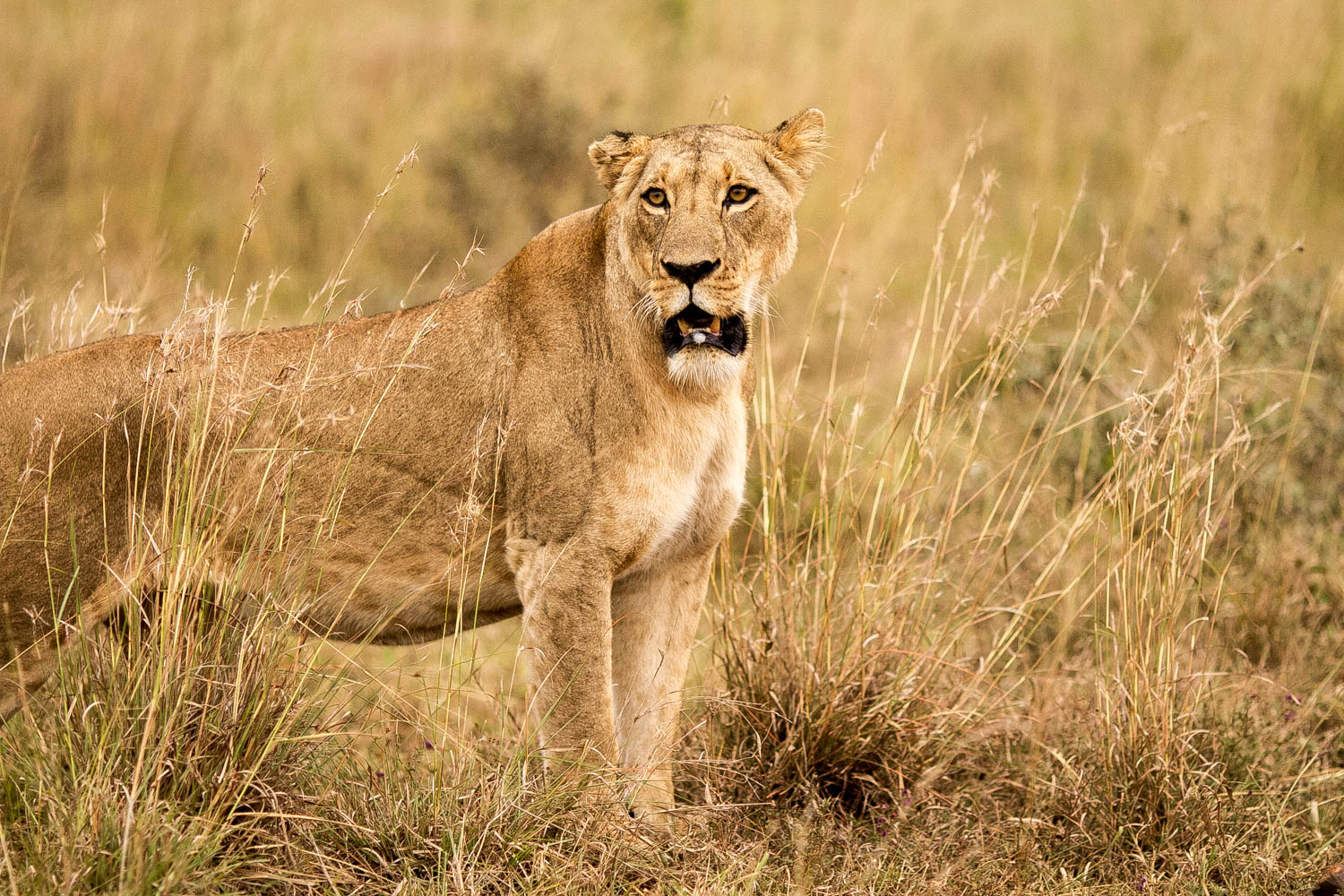 About one hour into the trip we managed to see two female lions walking side by side. They mostly ignored us so it was hard to get any kind of eye contact, but when it finally happened, I managed to get this one picture.
About one hour into the trip we managed to see two female lions walking side by side. They mostly ignored us so it was hard to get any kind of eye contact, but when it finally happened, I managed to get this one picture.
 The first of the many giraffes I saw in Nairobi National Park.
The first of the many giraffes I saw in Nairobi National Park.
 Zebras are one of the most common sights (with antelopes) in Nairobi National Park.
Zebras are one of the most common sights (with antelopes) in Nairobi National Park.
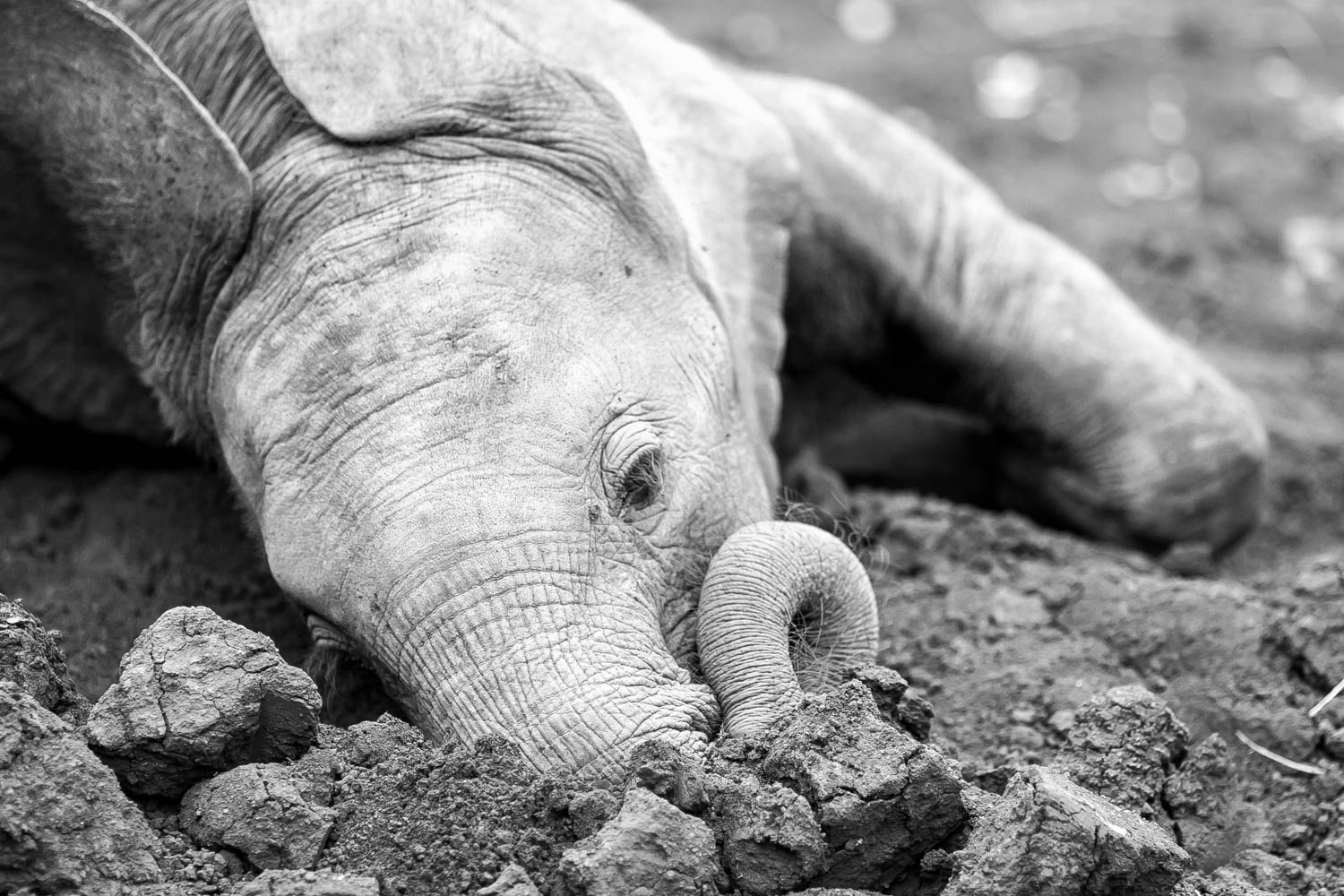 Although Nairobi National Park is too small to be home to elephants (for that you have to go to the Masai Mara national park, about 10 times larger), close to it is an elephant orphanage, where small orphan elephants are taken care of before being reintroduced in the nature. The causes for their being orphan range from natural diseases to poaching.
Although Nairobi National Park is too small to be home to elephants (for that you have to go to the Masai Mara national park, about 10 times larger), close to it is an elephant orphanage, where small orphan elephants are taken care of before being reintroduced in the nature. The causes for their being orphan range from natural diseases to poaching.
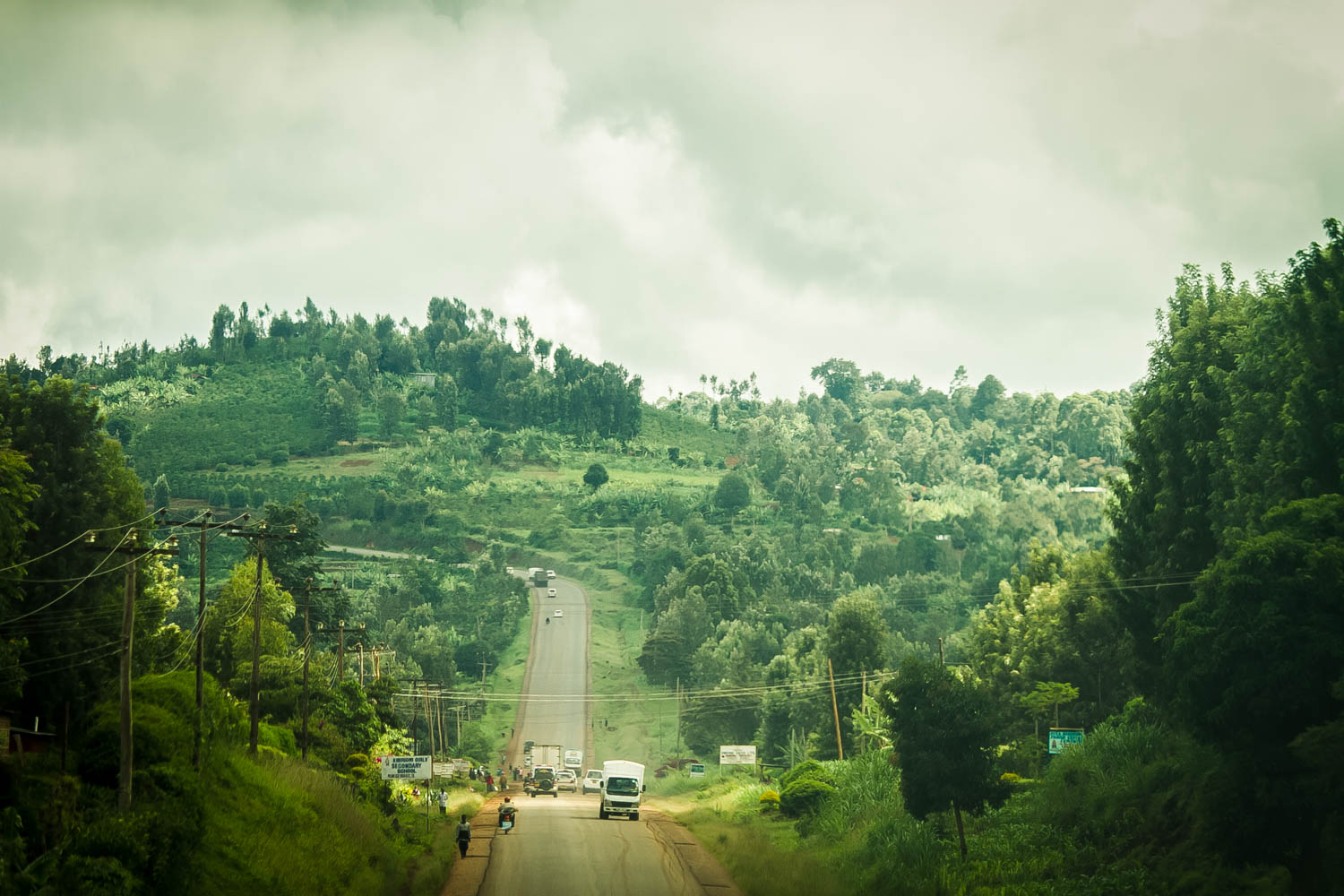 The Nyeri/Mt. Kenya region is located on the Kenyan Fertile Highlands, that are even greener that what their name implies.
The Nyeri/Mt. Kenya region is located on the Kenyan Fertile Highlands, that are even greener that what their name implies.
Communication can be (and often is) difficult with locals, especially in the rural areas where english is not always spoken by everyone. Being a Mzungu (white person) in a rural area (where tourists aren’t as common as in cities) easily attracts attention, and more often than not, results of people asking for money. The man on the picture is one example of that. He asked me to get a picture of him taken, then … wanted to charge me for it ! Thankfully I was with locals at the time who told him that I didn’t have any money on me.
It can be annoying at times, but it is one of the things you get used to over time. And while communication often is frustrating, it allows for some nice experiences, such as a woman on a bus who, albeit speaking a poor english, went into lots of efforts to show me that she went back to school and was getting straight As, and even showing me her grade reports. I could unfortunately not get a picture of her as I didn’t have my camera ready and I was in a crowded matatu, but it is one of the most marking memories of communicating with locals that I have.
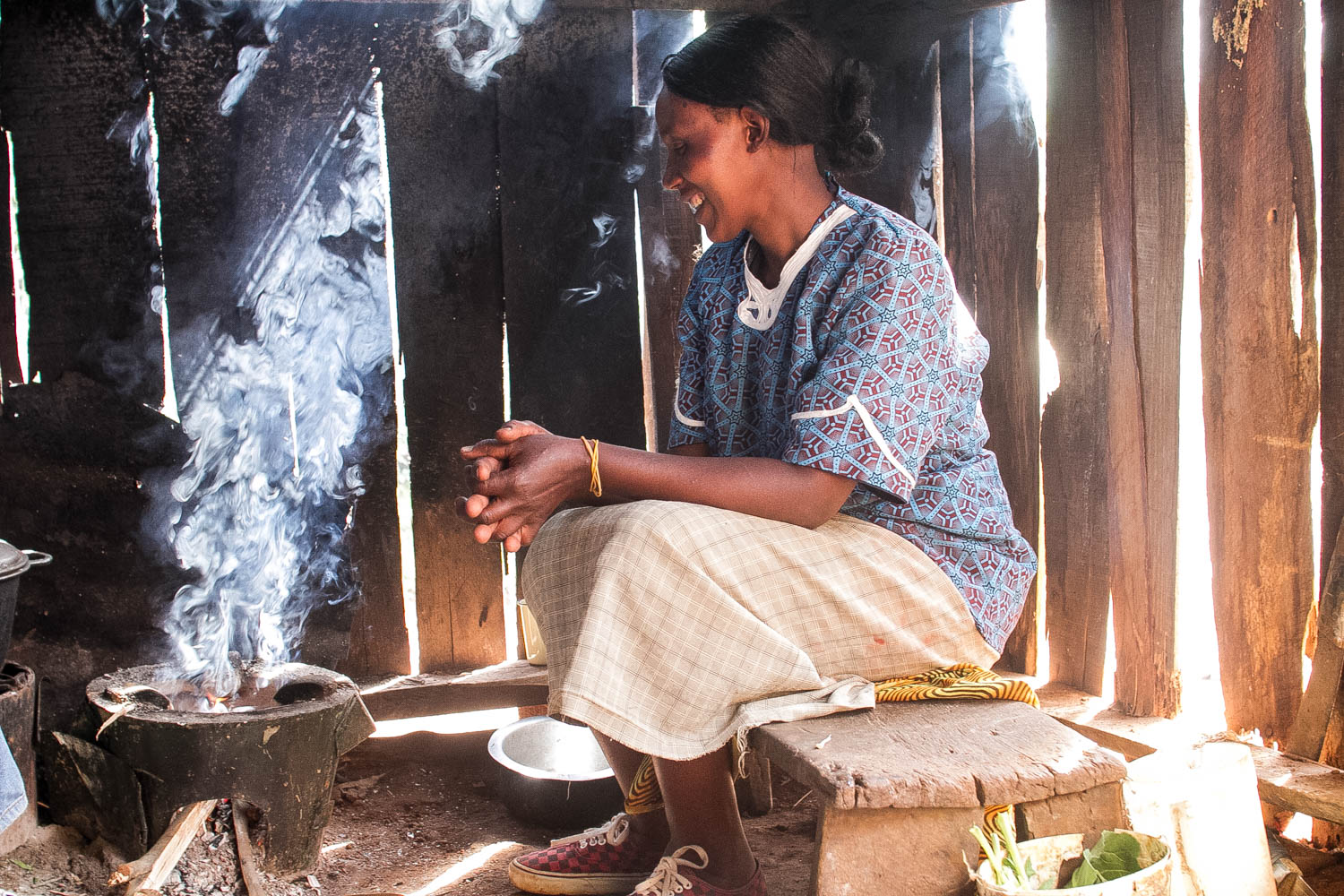 A woman preparing a meal on a "jiko" (Kiswahili for "stove"), an improved cookstove distributed by HSHC, the NGO I was working with.
A woman preparing a meal on a "jiko" (Kiswahili for "stove"), an improved cookstove distributed by HSHC, the NGO I was working with.
These “Improved” cookstoves consume less fuelwood than the traditional way of cooking (3 stone fire), and produce far less smoke (the 3 stone fire can easily fill up the entire room with smoke !). This allows women to be less at risk while cooking, and spend less time and money for fuelwood collection.
My thesis project consists of modeling the impact of such stoves on the local energy demand and ecosystem. Women transporting bundles of Firewood. In rural Kenya, people often have to travel several km to get the wood they need for cooking their daily meals.
I came across these three kids on their way back from school, in their uniform (mandatory for all schools in Kenya). As soon as they saw me their reaction was :
- "OMG Mzungu !"
- Wave at me, and say something in the lines of "hihowayou?"
- I wave back, they burst out laughing
With time I noticed that pattern with many other kids, especially in the rural areas where the visit of westerners isn’t common.
 Took this picture of a child who just came back from school - he is still wearing his uniform. Couldn't help but notice his penetrating gaze.
Took this picture of a child who just came back from school - he is still wearing his uniform. Couldn't help but notice his penetrating gaze.
Around the equator, the days are always 12 hours long, same as nights. Coming from Sweden (where days are now more than 18 hours long), that was one of the most obvious changes when i came here.
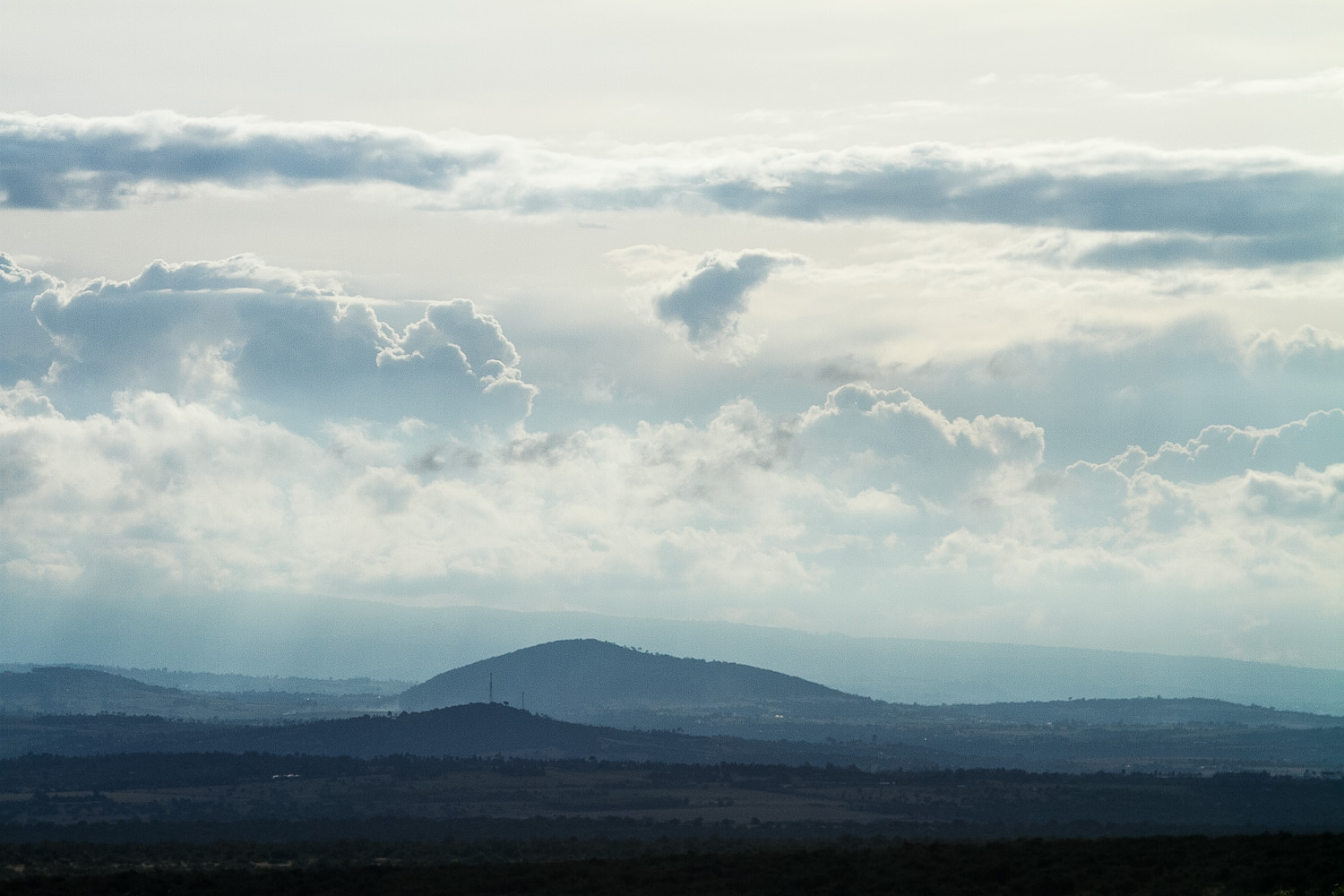 This picture was taken on my way back from Karatina, a bit after sunset (or what is known to photographers as the "blue hour").
This picture was taken on my way back from Karatina, a bit after sunset (or what is known to photographers as the "blue hour").
Cooking lunch in the Kenyan rural area means mostly relying on yourself to get all the ingredients :
- Cutting the wood to use for cooking (in the foreground)
- Slaughtering a chicken yourself, then take away the feathers and prepare it for cooking (in the background)
- Getting your vegetables from your field
- etc...
 Stella is one of the employees of the HSHC Guest House (where I was staying). On a sunday she kindly invited us to her place. This is her with her two kids, preparing Chapati (a traditional meal resembling crepes) for lunch.
Stella is one of the employees of the HSHC Guest House (where I was staying). On a sunday she kindly invited us to her place. This is her with her two kids, preparing Chapati (a traditional meal resembling crepes) for lunch.
 Gerald is 7 years old, has straight As in school and loves running and taking pictures. I took this picture of him while we were walking back home from a small walk, it was raining then, but it didn't keep him from running all around.
Gerald is 7 years old, has straight As in school and loves running and taking pictures. I took this picture of him while we were walking back home from a small walk, it was raining then, but it didn't keep him from running all around.
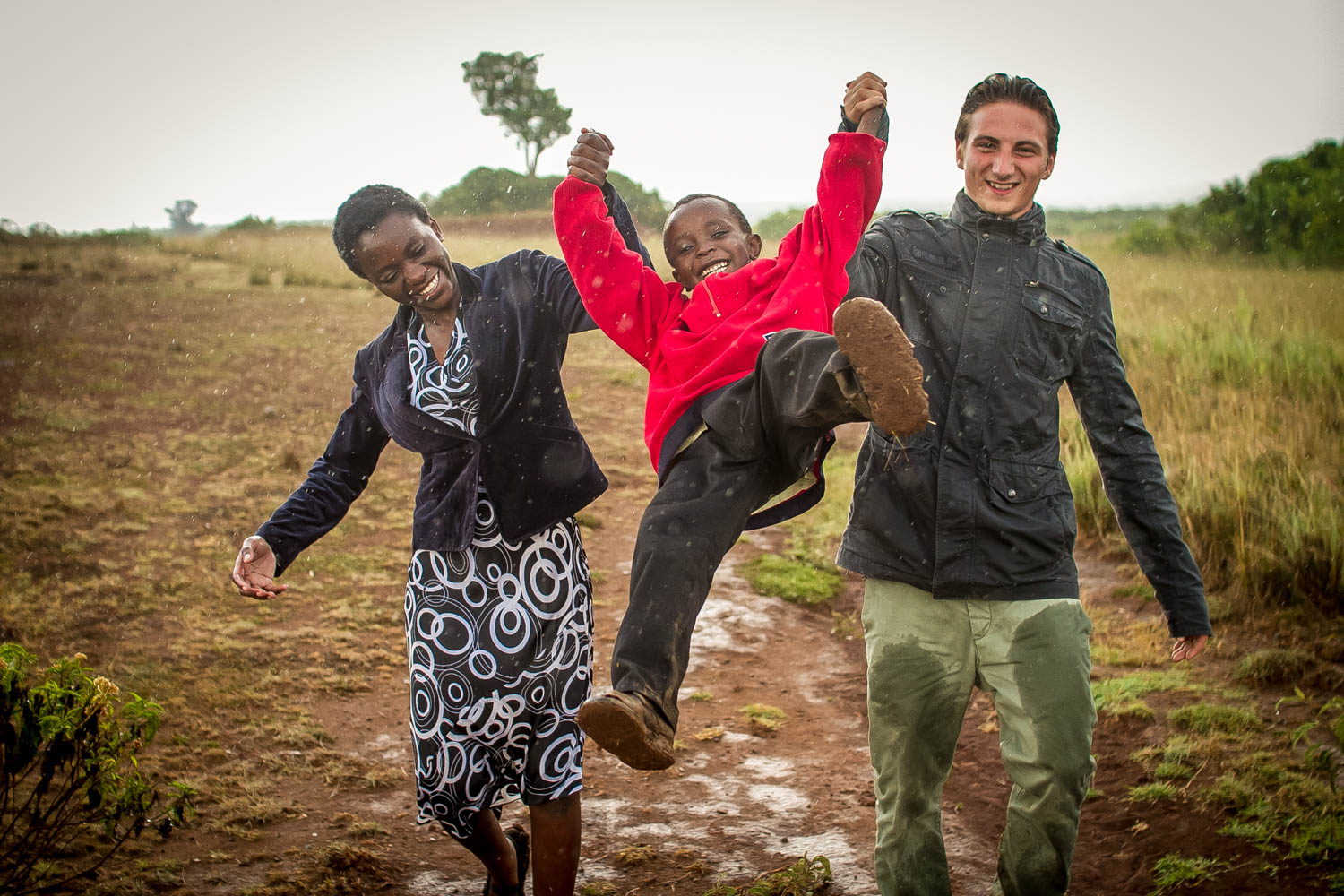 After a few hours of walking, it started raining, we were all tired but Gerald still wanted to play. Ruth (left) and Tom (right) are two other volunteers in the area.
After a few hours of walking, it started raining, we were all tired but Gerald still wanted to play. Ruth (left) and Tom (right) are two other volunteers in the area.
After Nairobi National Park in the beginning of my stay, I decided to visit another National Park on my last week.
 Aberdare is a forest and a small mountain in the Mt. Kenya region, and part of it was made into a national park. Although you get to see some nice landscapes, it isn't as interesting as Nairobi National Park, because animals tend to hide in the forest, and overall it's just a car ride in a forest. And at $65 for the entrance only, an expensive one.
Aberdare is a forest and a small mountain in the Mt. Kenya region, and part of it was made into a national park. Although you get to see some nice landscapes, it isn't as interesting as Nairobi National Park, because animals tend to hide in the forest, and overall it's just a car ride in a forest. And at $65 for the entrance only, an expensive one.
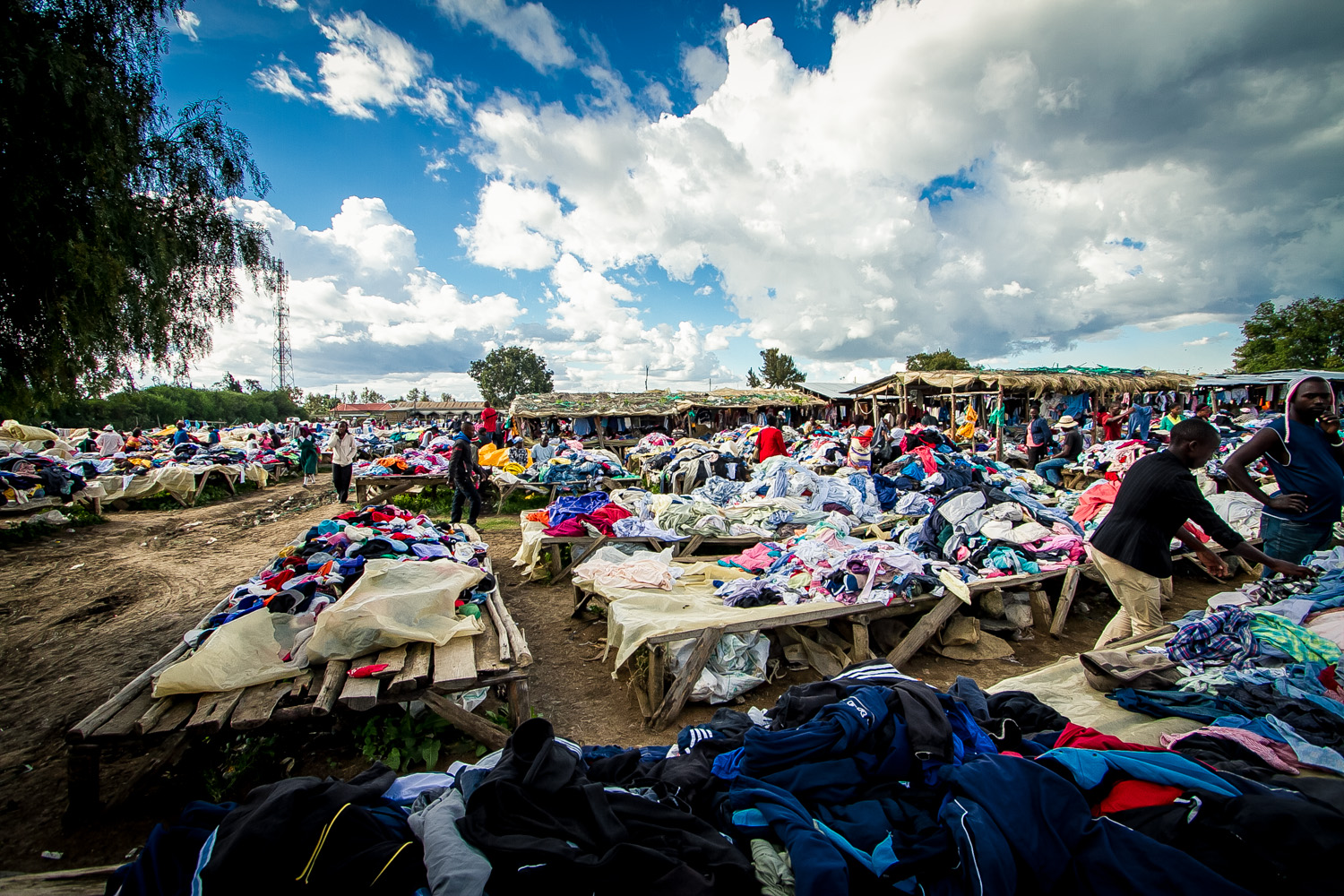 Twice a week in Nanyuki there is a huge open air market. Clothes and fruits are the main things being exchanged. A lot of the clothes come either from China or are second hand donated clothes from European countries.
Twice a week in Nanyuki there is a huge open air market. Clothes and fruits are the main things being exchanged. A lot of the clothes come either from China or are second hand donated clothes from European countries.
 One of the bars that lies in the "cleanest slum in Africa". It was very clean indeed, it did not look like a slum at all. You can order a speciality of here, a beer locally brewed with a mix of honey and lemon.
One of the bars that lies in the "cleanest slum in Africa". It was very clean indeed, it did not look like a slum at all. You can order a speciality of here, a beer locally brewed with a mix of honey and lemon.
 Moussa is a former boxer living in Nanyuki. He never drinks before the weekend, but that day was an exception.
Moussa is a former boxer living in Nanyuki. He never drinks before the weekend, but that day was an exception.
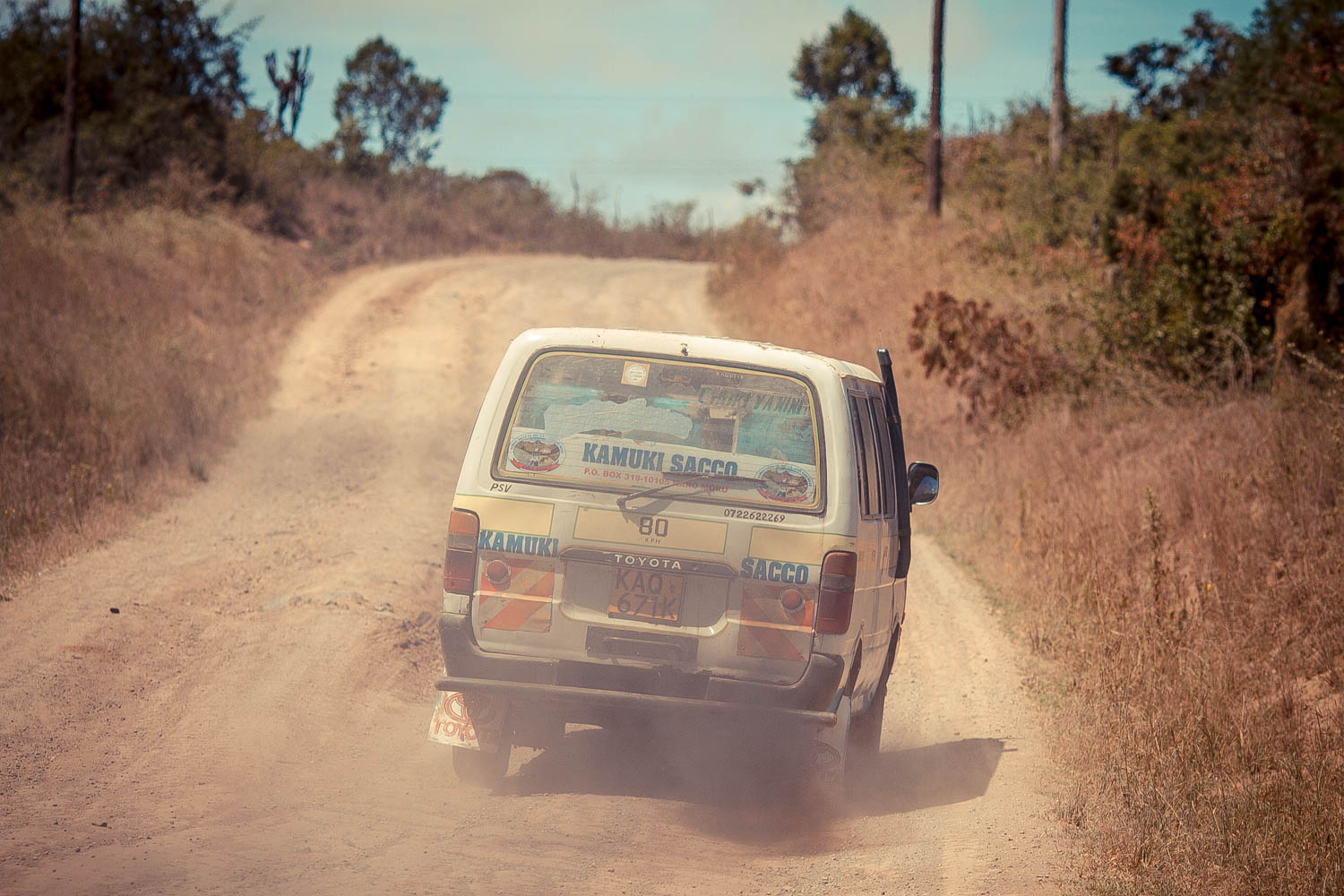 Matatus are the local version of the bus. They are mini vans with a capacity of officially 9 people (but I have seen up to 16 people crammed in one!). They are cheap, drive fast, and are the main way people use to move around.
Matatus are the local version of the bus. They are mini vans with a capacity of officially 9 people (but I have seen up to 16 people crammed in one!). They are cheap, drive fast, and are the main way people use to move around.
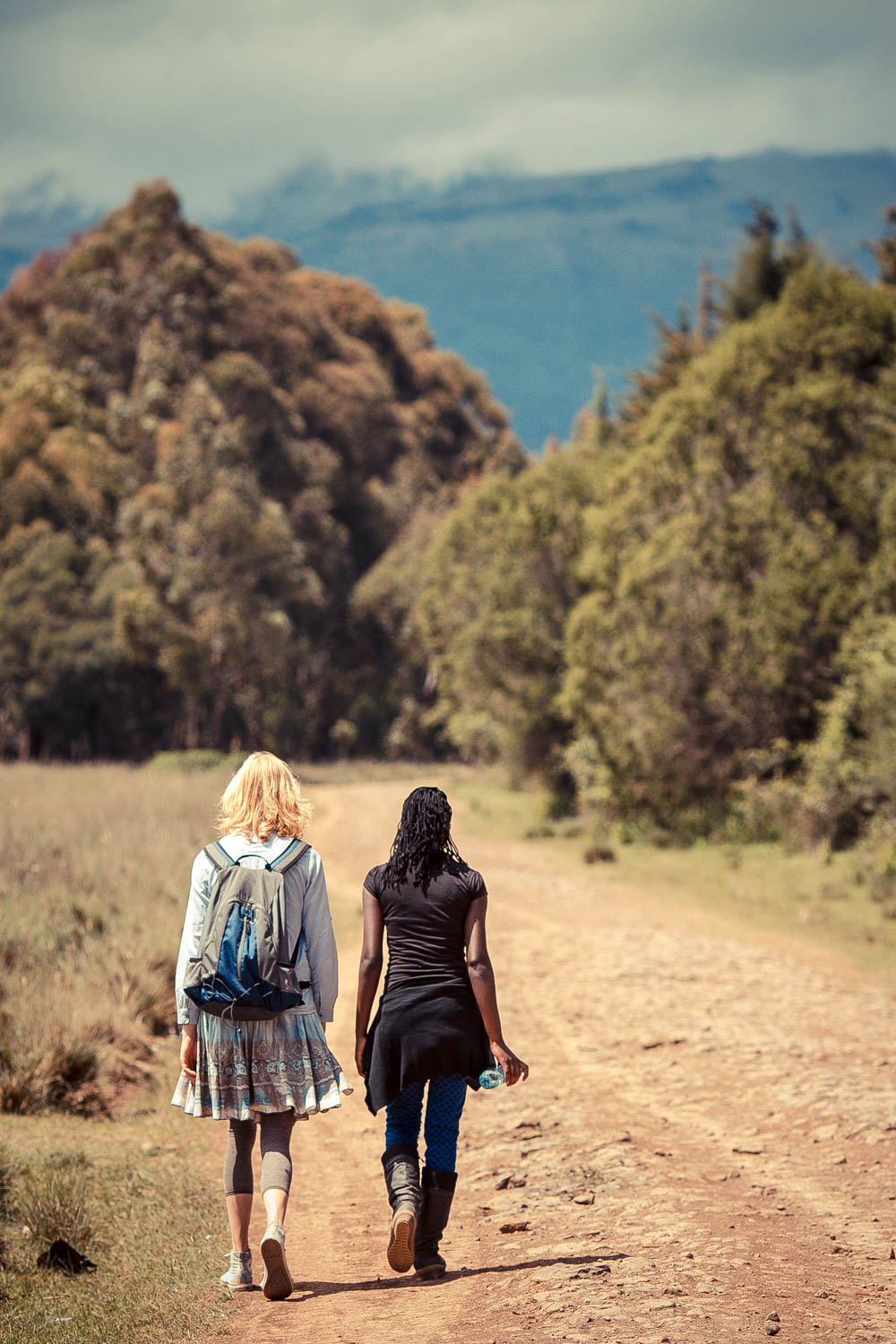 Ruth (right) and Nieke (left), two other volunteers in the area, while we were walking towards the forest surrounding Mt. Kenya.
Ruth (right) and Nieke (left), two other volunteers in the area, while we were walking towards the forest surrounding Mt. Kenya.
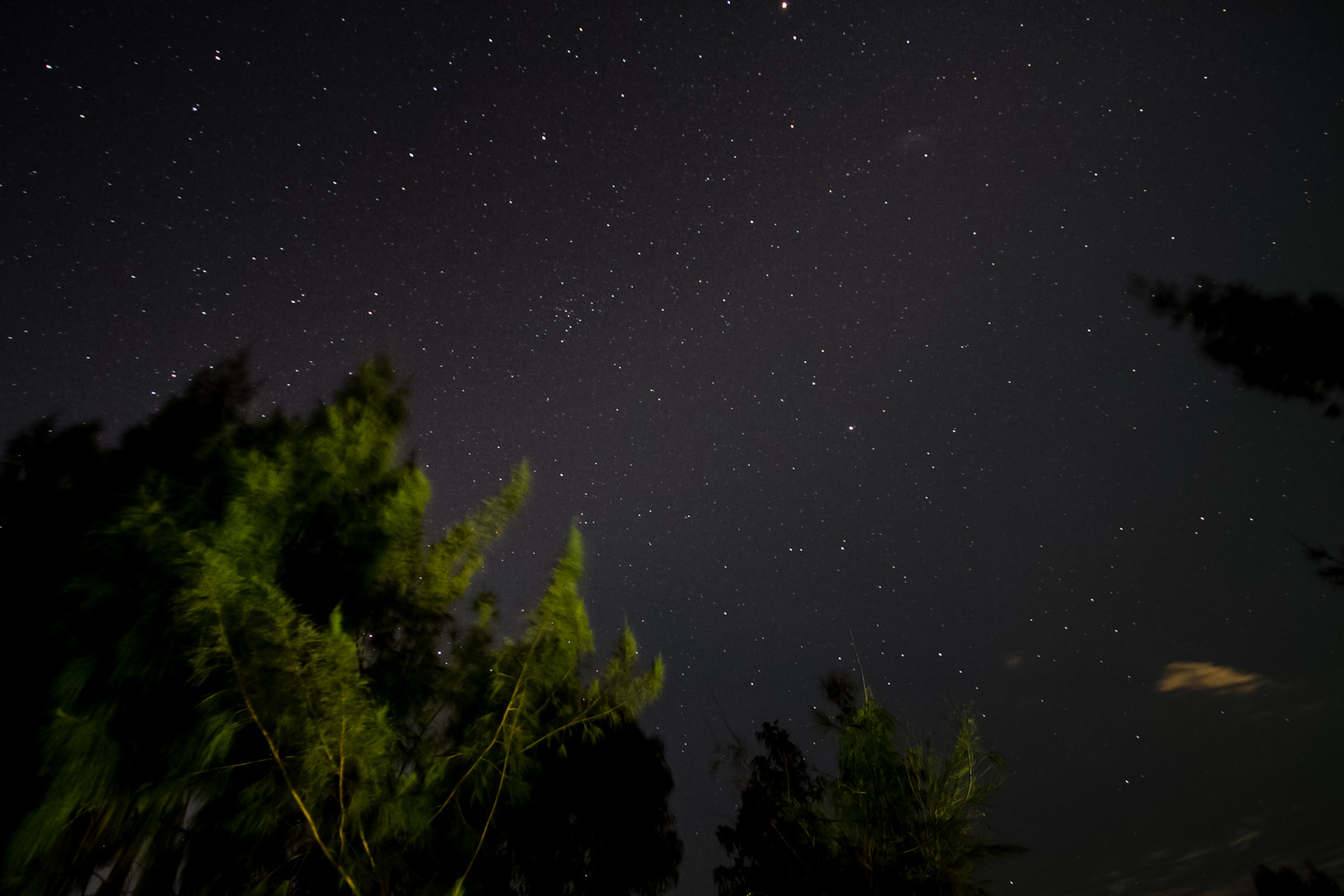 One of the perks of living in the middle of nowhere is that sometimes you can enjoy a nice sky full of stars, far from any light pollution.
One of the perks of living in the middle of nowhere is that sometimes you can enjoy a nice sky full of stars, far from any light pollution.
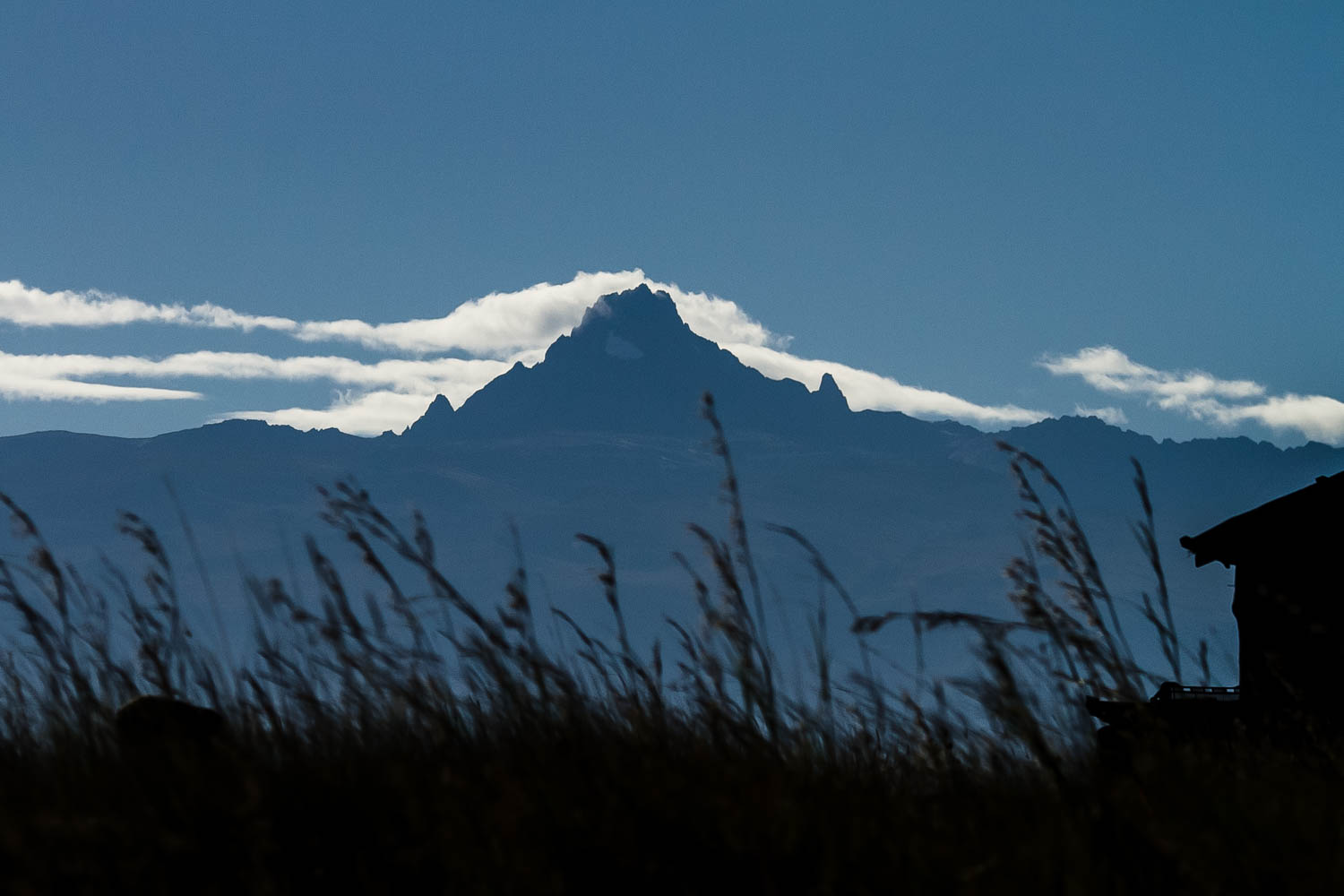 The Mount Kenya volcano, now extinct, gave its name to the country. Quite impressive to see it emerging of an otherwise flat landscape. The picture comes quite late because it is quite difficult to catch at clear sky at this time of the year, and the mountain is often surrounded by clouds.
The Mount Kenya volcano, now extinct, gave its name to the country. Quite impressive to see it emerging of an otherwise flat landscape. The picture comes quite late because it is quite difficult to catch at clear sky at this time of the year, and the mountain is often surrounded by clouds.



